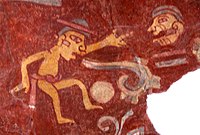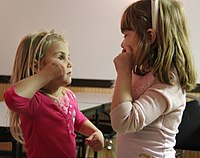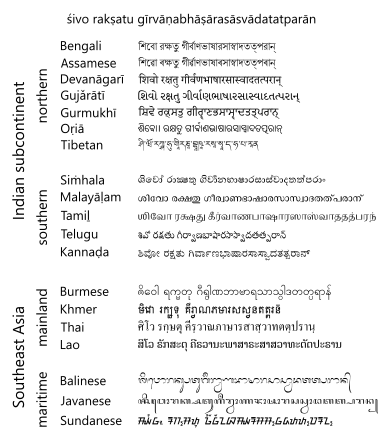language
Language is a structured system of communication that consists of grammar and vocabulary.
Introduction




It is the primary means by which humans convey meaning, both in spoken and written forms, and may also be conveyed through sign languages. Human language is characterized by its cultural and historical diversity, with significant variations observed between cultures and across time. Human languages possess the properties of productivity and displacement, which enable the creation of an infinite number of sentences, and the ability to refer to objects, events, and ideas that are not immediately present in the discourse. The use of human language relies on social convention and is acquired through learning.
Estimates of the number of human languages in the world vary between 5,000 and 7,000. Precise estimates depend on an arbitrary distinction (dichotomy) established between languages and dialects. Natural languages are spoken, signed, or both; however, any language can be encoded into secondary media using auditory, visual, or tactile stimuli – for example, writing, whistling, signing, or braille. In other words, human language is modality-independent, but written or signed language is the way to inscribe or encode the natural human speech or gestures.
Depending on philosophical perspectives regarding the definition of language and meaning, when used as a general concept, "language" may refer to the cognitive ability to learn and use systems of complex communication, or to describe the set of rules that makes up these systems, or the set of utterances that can be produced from those rules. All languages rely on the process of semiosis to relate signs to particular meanings. Oral, manual and tactile languages contain a phonological system that governs how symbols are used to form sequences known as words or morphemes, and a syntactic system that governs how words and morphemes are combined to form phrases and utterances.
The scientific study of language is called linguistics. Critical examinations of languages, such as philosophy of language, the relationships between language and thought, how words represent experience, etc., have been debated at least since Gorgias and Plato in ancient Greek civilization. Thinkers such as Jean-Jacques Rousseau (1712–1778) have argued that language originated from emotions, while others like Immanuel Kant (1724–1804) have argued that languages originated from rational and logical thought. Twentieth century philosophers such as Ludwig Wittgenstein (1889–1951) argued that philosophy is really the study of language itself. Major figures in contemporary linguistics of these times include Ferdinand de Saussure and Noam Chomsky. (Full article...)
Selected language -
Khmer (/kəˈmɛər/; ខ្មែរ, UNGEGN: Khmêr [kʰmae]) is an Austroasiatic language spoken by the Khmer people, and the official and national language of Cambodia. Khmer has been influenced considerably by Sanskrit and Pali, especially in the royal and religious registers, through Hinduism and Buddhism. It is also the earliest recorded and earliest written language of the Mon–Khmer family, predating Mon and Vietnamese, due to Old Khmer being the language of the historical empires of Chenla, Angkor and, presumably, their earlier predecessor state, Funan.
The vast majority of Khmer speakers speak Central Khmer, the dialect of the central plain where the Khmer are most heavily concentrated. Within Cambodia, regional accents exist in remote areas but these are regarded as varieties of Central Khmer. Two exceptions are the speech of the capital, Phnom Penh, and that of the Khmer Khe in Stung Treng province, both of which differ sufficiently enough from Central Khmer to be considered separate dialects of Khmer. (Full article...)Did you know (auto-generated)

- ... that Ahmet Cevat Emre shared a household with Vâlâ Nureddin and Nâzım Hikmet in Batumi, with Emre responsible for cooking, Hikmet writing poetry and Nureddin giving Turkish language lessons?
- ... that Micah Joseph Lebensohn began to translate poetry into Hebrew at the age of twelve?
- ... that Ontario's last German-language newspaper, the Berliner Journal, was forced to publish in English in 1918 after the Canadian government prohibited German publications?
- ... that New Zealand author Patricia Grace did not include a glossary for Māori terms in her book Potiki because she "didn't want the Māori language to be treated as a foreign language in its own country"?
- ... that Ita Ekpenyon coached American actor Paul Robeson in speaking the Efik language for the 1937 film King Solomon's Mines?
- ... that David Ahl purchased BASIC-8 to sell with the PDP-8 when DEC management proved more interested in their own FOCAL language?
More did you know -

- ...that the Permanent North American Gaeltacht (pictured) is an officially designated Irish speaking area in English/French speaking Ontario, Canada, the first of its kind outside of Ireland?
- ...that Englog is English mixed with Tagalog words, while Taglish is Tagalog mixed with English words, both being macaronic languages?
- ...that some 19th-century newspapers in South Australia published articles in the Cornish dialect of English to meet the needs of miners who had migrated there?
- ...that the Halegannada, literally "old Kannada", is an ancient form of the Kannada language?
Categories
Linguistics: Computational linguistics • Grammar • Historical linguistics • Morphology • Phonetics • Phonology • Pragmatics • Reading • Semantics • Sociolinguistics • Syntax • Writing
Languages: Language families • Pidgins and creoles • Sign languages
Linguists: By nationality • Historical linguists • Morphologists • Phoneticians • Phonologists • Sociolinguists • Syntacticians • Translators
Stubs: Constructed languages • Languages • Linguists • Pidgins and creoles • Typography • Vocabulary and usage • Writing systems
Full Language category tree |
|---|
| Select [►] to view subcategories |
Related portals
Selected topic -

Yue (Cantonese pronunciation: [jyːt̚˨]) is a branch of the Sinitic languages primarily spoken in Southern China, particularly in the provinces of Guangdong and Guangxi (collectively known as Liangguang).
The term Cantonese is often used to refer to the whole branch, but linguists prefer to reserve the name Cantonese for the variety used in Guangzhou (Canton), Wuzhou (Ngchow), Hong Kong and Macau, which is the prestige dialect of the group. Taishanese, from the coastal area of Jiangmen (Kongmoon) located southwest of Guangzhou, was the language of most of the 19th-century emigrants from Guangdong to Southeast Asia and North America. Most later migrants have been speakers of Cantonese. (Full article...)Selected picture -

The Rosetta Stone is an ancient Egyptian granodiorite stele inscribed with a decree issued at Memphis in 196 BC on behalf of King Ptolemy V. The decree appears in three scripts: the upper text is Ancient Egyptian hieroglyphs, the middle portion Demotic script, and the lowest Ancient Greek.
Language News
- 1 January 2024 – Public Domain Day
- The animated short film Steamboat Willie, the German-language version of the novel All Quiet on the Western Front, and other works published in 1928 enter the public domain in the United States. (Mashable)
Topics

Languages of Africa: Arabic, Chadic, Cushitic, Kanuri, Maasai, Setswana, Swahili, Turkana, Xhosa, Yoruba, Zulu, more...
Languages of the Americas: Aleut, Carib, Cherokee, Inuktitut, Iroquois, Kootenai, Mayan, Nahuatl, Navajo, Quechuan, Salish, American Sign Language, more...
Languages of Asia: Arabic, Assamese, Balochi, Bengali, Chinese, Japanese, Hajong, Hebrew, Hindustani, Kannada, Kokborok, Marathi, Khasi, Korean, Kurdish, Malayalam, Manipuri, Meithei, Mongolian, Persian, Rajasthani, Sindhi, Sanskrit, Sylheti, Tamil, Tanchangya, Tulu, Telugu, Tibetan, Thai, Turkish, Vietnamese, Khowar, more...
Languages of Austronesia: Austric, Fijian, Hawaiian, Javanese, Malagasy, Malay, Maori, Marshallese, Samoan, Tahitian, Tagalog, Tongan, Auslan, more...
Languages of Europe: Basque, Czech, Danish, Dutch, English (book), French, German, Greek, Italian, Latin, Leonese, Norwegian, Polish, Portuguese, Romanian, Russian, Slovak, Spanish, Ukrainian more...
Constructed languages: Esperanto, Ido, Volapük, more...
Agglutinative language, Analytic language, Constructed language, Creole, Context-free language, Extinct language, Dialect, Fusional language, Inflectional language, International language, Isolating language, Language isolate, National language, Natural language, Pidgin, Pluricentric language, Polysynthetic language, Proto-language, Sign language, Spoken language, Synthetic language, Variety (linguistics)

Applied linguistics, Cognitive linguistics, Accent (dialect), Computational linguistics, Descriptive linguistics, Eurolinguistics, Generative linguistics, Historical linguistics, Lexicology, Lexical semantics, Morphology, Onomasiology, Phonetics, Phonology, Pragmatics, Prescription, Prototype semantics, Psycholinguistics, Semantics, Stylistics, Sociolinguistics, Syntax
See also: List of linguists

Alphabets: Arabic alphabet, Bengali alphabet, Cyrillic alphabet, Hebrew alphabet, Latin alphabet, more...
Other writing systems: Abjad, Abugida, Braille, Hieroglyphics, Logogram, Syllabary, SignWriting, more..
See also: History of the alphabet, Script
Associated Wiki
The following Wiki Foundation sister projects provide more on this subject:
Find a language
| Enter an ISO 639 code to find the corresponding language article |
This article uses material from the Wikipedia English article Portal:Language, which is released under the Creative Commons Attribution-ShareAlike 3.0 license ("CC BY-SA 3.0"); additional terms may apply (view authors). Content is available under CC BY-SA 4.0 unless otherwise noted. Images, videos and audio are available under their respective licenses.
®Wikipedia is a registered trademark of the Wiki Foundation, Inc. Wiki English (DUHOCTRUNGQUOC.VN) is an independent company and has no affiliation with Wiki Foundation.

